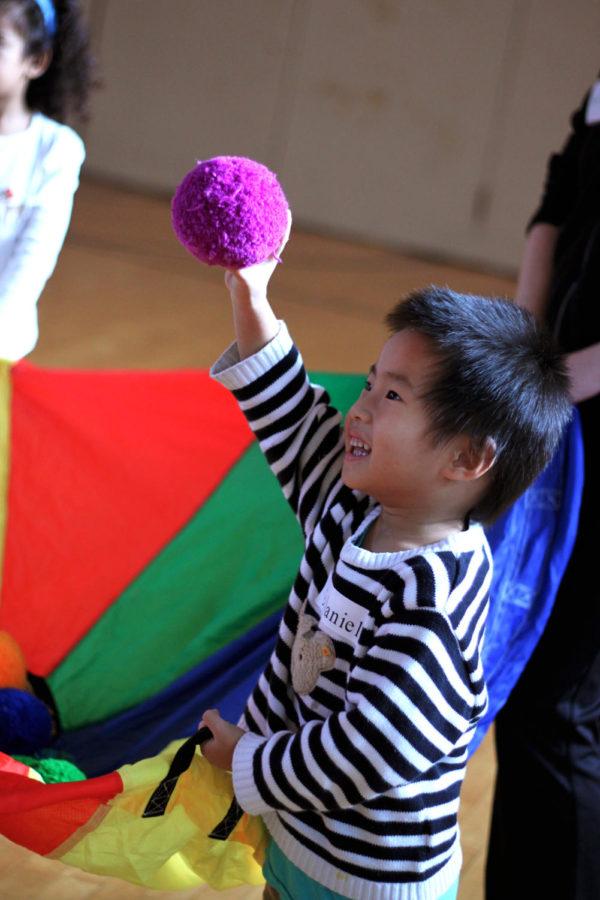Iowa State Faculty Collaborates in Preschool Fitness Study
Ellen Williams/Iowa State Daily
Along with other preschoolers, Daniel enjoyed playing with the parachute as the kids exercised in the 202 gym at Forker Hall for 30 minutes on Thursday, Nov. 14.
November 20, 2013
Three ISU faculty members are working to help preschool teachers keep children actively learning.
Spyridoula Vazou, assistant professor of kinesiology, is the principle investigator in the research project. She is joined by Elizabeth Stegemoller, assistant professor of kinesiology, and Jacqueline Krogh, senior lecturer of human development and family studies.
Their goal is to find ways to integrate physical movement into the activities that preschoolers might do during the school day.
“Our goal is not just how active the kids are,” Vazou said. “That’s an outcome, of course, we want the kids to be active. But our primary focus is on learning. How can we help the kids be better students, better learners and prepare them for the academics of school? Being physically active is an important part, but I believe we hit two birds with one stone.”
The group believes that with more expectations being placed on preschools, physical activity is being placed on the back burner.
“We see with the higher requirements for achievement, school personnel are cutting down on physical education to meet those requirements,” Vazou said. “But basically they are pushing students backwards because they require them to sit more. And by sitting more they don’t benefit as much from their learning.”
Krogh believes that teachers can solve this problem by integrating physical activity into the rest of the school day.
“One of my real hopes for this is that teachers will be more comfortable and see large motor as an important part of their classroom,” Krogh said. “If they have a good repertoire of activities, maybe they will feel more comfortable using those.”
One example of an activity that could make the switch from passive to active learning is reading a book to the children. Vazou described a number of activities that could be incorporated – from having the kids act out the different parts of the story to giving them flashcards to match up with others around the room.
Vazou also explained why this is beneficial.
“They need to think, and they need to decide and they need to have self-control, as well as take turns and communicate with the other kids,” Vazou said. “So it’s a very active learning.”
Krogh stated that it is important for children to have different ways to approach a lesson.
“I think young children learn in different ways. So they might learn some things sitting and listening, but they learn a lot of things hands-on,” Krogh said. “This is another way that teachers can work with them to help them learn.”
The group is excited to discover which elements of its research will be applicable to a real learning environment. It will also allow Iowa State students to work with the students and learn about the incorporation of movement into academics.
“It is an ongoing process for us as well,” Vazou said. “We will learn and we will apply that knowledge in helping our college students continue in their professional development.”







